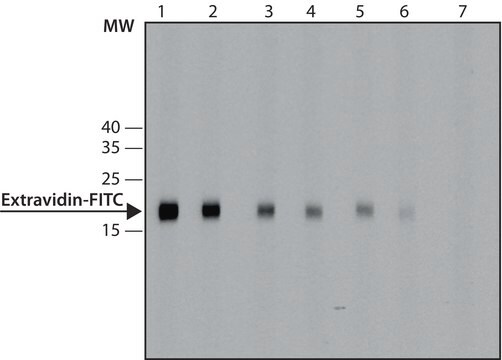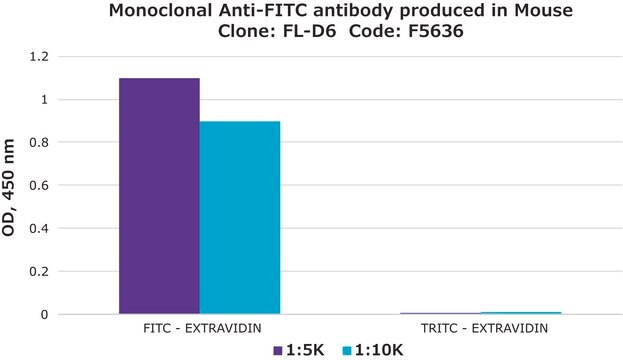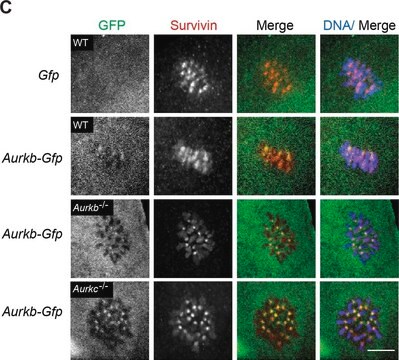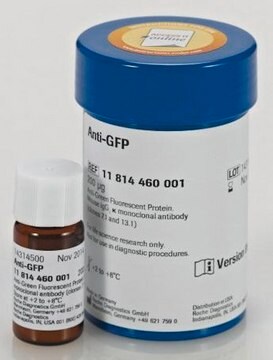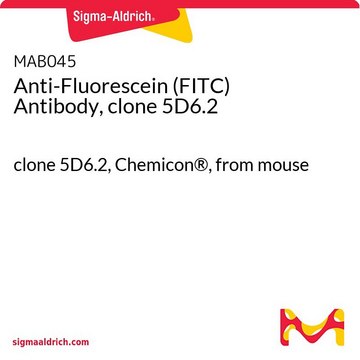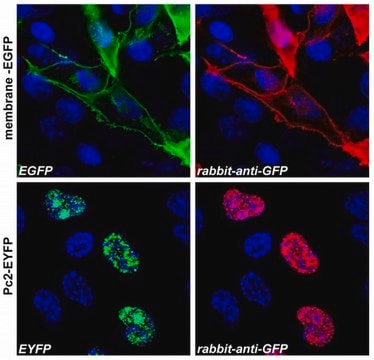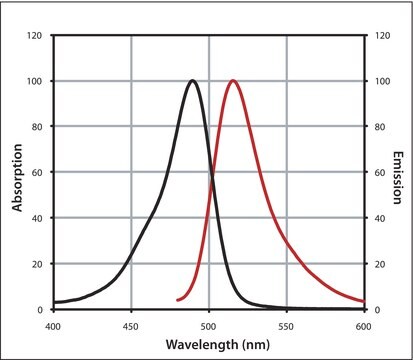B0287
Monoclonal Anti-FITC−Biotin antibody produced in mouse
clone FL-D6, purified immunoglobulin, buffered aqueous solution
Synonyme(s) :
Monoclonal Anti-FITC
About This Item
Produits recommandés
Source biologique
mouse
Niveau de qualité
Conjugué
biotin conjugate
Forme d'anticorps
purified immunoglobulin
Type de produit anticorps
primary antibodies
Clone
FL-D6, monoclonal
Forme
buffered aqueous solution
Technique(s)
immunohistochemistry (formalin-fixed, paraffin-embedded sections): 1:400 using human tonsil
Isotype
IgG1
Conditions d'expédition
dry ice
Température de stockage
−20°C
Modification post-traductionnelle de la cible
unmodified
Vous recherchez des produits similaires ? Visite Guide de comparaison des produits
Description générale
Spécificité
Immunogène
Application
- for amplification of signal in immunofluorescence assays
- in Ag-activated beads for flow-based micro immunoassay of parathyroid hormone and IL-5
- enzyme linked immunosorbent assay (ELISA)
Actions biochimiques/physiologiques
Forme physique
Clause de non-responsabilité
Vous ne trouvez pas le bon produit ?
Essayez notre Outil de sélection de produits.
Code de la classe de stockage
10 - Combustible liquids
Classe de danger pour l'eau (WGK)
WGK 3
Point d'éclair (°F)
Not applicable
Point d'éclair (°C)
Not applicable
Faites votre choix parmi les versions les plus récentes :
Déjà en possession de ce produit ?
Retrouvez la documentation relative aux produits que vous avez récemment achetés dans la Bibliothèque de documents.
Notre équipe de scientifiques dispose d'une expérience dans tous les secteurs de la recherche, notamment en sciences de la vie, science des matériaux, synthèse chimique, chromatographie, analyse et dans de nombreux autres domaines..
Contacter notre Service technique